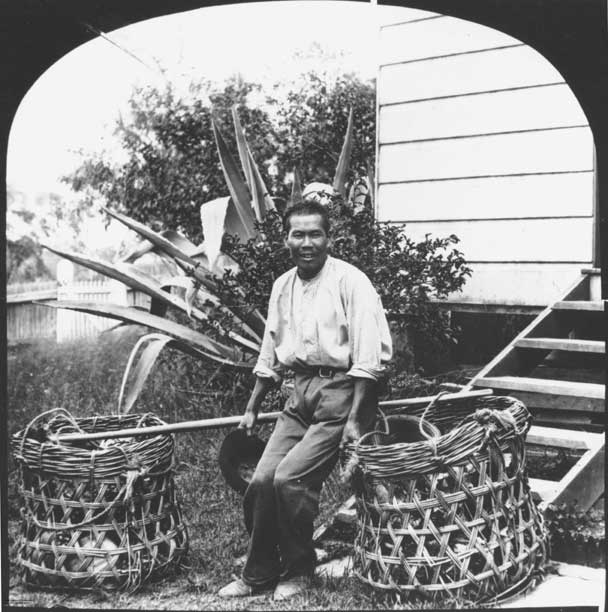 Chinese fruit and vegetable hawker, Brisbane
Chinese fruit and vegetable hawker, Brisbane
TLF ID R8180
This black-and-white photograph shows a Chinese fruit and vegetable seller, or hawker, known as 'Vegetable John' according to the accompanying rather derogatory description of the time, posing at the steps of a suburban house. He is wearing Western-style clothes and is resting his shoulder pole and two very large open-weave cane baskets on the ground. The baskets appear to contain fresh produce. A household garden and picket fence are in the background.
